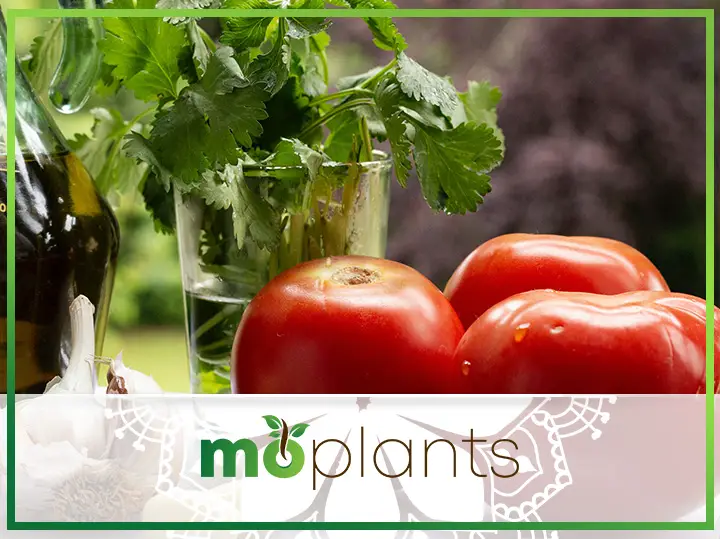Individuals who love gardening and wish to grow their fresh produce (fruits and vegetables) know how rewarding the process can be despite being slow. Thus, they must ensure that the products they use are safe for the plant and what they’re growing.
Neem oil is an excellent organic product for plants that not only helps eliminate pesticides but provides extra glossiness to the texture of the plant. The best part about this oil is that it dissolves easily; once you spray water on the plants, it comes off just as quickly.
Still, the big question remains, “Is neem oil safe on fruits and vegetables?” Let’s find out!
Is Neem Oil Safe to Use on Fresh Produce?
Since neem oil is extracted from raw neem plants, it is considered a natural oil free from toxins and ideal for use on fruits and vegetables. The best part about this neem oil is that when you know the amount and how to use it, it can be a great way to protect your plants against various pests.
The neem oil’s consistency might be thick, but it does not last more than three to four days on your plant. It starts coming off, and its effectiveness reduces. Thus, it is easy to wash it off fast. While this oil is generally considered toxin-free for all vegetables and fruits, it is critical to follow the label directions and use it at the recommended dilution rate. You need to apply neem oil properly for it to work as a natural pesticide.
This incredible oil is a natural pesticide that can help control many pests and diseases. However, it can also be toxic to some beneficial insects, such as bees and ladybugs, if not used properly. You need to note that neem oil should be used as a preventative measure, not as a control for existing pests or diseases.
Neem oil is also not considered safe for consumption, so it’s essential to wash your fresh produce thoroughly before eating them if they have been covered with neem oil. It’s always good to consult with the authorities or an expert in your area to know if neem oil can be used on vegetables and fruits for your specific area, as some local laws and regulations might differ on their use.
Additionally, it’s always a good idea to test the neem oil on one leaf of the edible plant before applying it to the entire plant to ensure no adverse reactions.
Using Neem Oil as a Solution
The main component of neem oil is Azadirachtin which works wonders on your plant. When consumed by pests, it causes a loss of appetite, which eventually results in starvation. Moreover, it leads to infertility in fully-grown bugs and stops the growth of new ones, reducing insect problems. Lastly, it disrupts the development of pests like leprechauns and stops them from breeding.
Since Azadirachtin is extracted from raw neem, it jams the airlines of pests and kills them instantly. The oil has several antibacterial and antifungal properties, making it a great product to use for mold or to fight root rot conditions in your plant.
However, it is always a sensible idea to consult the description or experts before using neem oil as the sole product for your plants. Follow the directions on the neem oil bottle carefully to ensure the safety and quality of the produce.
Application of Neem Oil
Neem oil is a great way to eliminate pesticides for your plants and helps remove the issue with consistent use. One major precaution must be taken, just like all pesticides. Never use pure neem oil directly on your plants. It doesn’t work well under direct sunlight and will have severe side effects, such as burning your plant.
Application procedure:
When making the pesticide at home, you need to weaken the consistency by diluting neem oil with water. Start by taking a cold-pressed, organic neem oil that does not include additives and is nontoxic for your organic garden. Then, mix a small dose of neem oil with water and stir until it dissolves.
To further dilute it, you can mix one teaspoon of dish wash soap, helping remove any strong chemicals. Moreover, this step makes the neem oil more effective and enables it to stay longer on the leaves. The amount of water, neem oil, and dish wash soap you need depends on how many plants you spray on. You can make it accordingly.
When your mixture is ready, you can easily transfer it into a spray bottle and spray the neem oil on your plants. It is best to spray lightly and leave it like that. The mixture will dilute into the plant in about an hour, and you’ll see a noticeable difference within a couple of days. You can apply as per your need or until the infestation is gone. If you’re using this to remove pests, it is best to do it once every two weeks, depending on the severity of the problem.
Final Thoughts
It is settled that neem oil is safe to use on fruits and vegetables. Still, you should clean the produce thoroughly by placing them in a big container of lukewarm water mixed with soap. It will help remove toxins from the previous mixture and ensure your fresh produce is good to be consumed.
However, you should remember that neem oil is not the only source of removing insects from feeding on your fresh produce. If your pest problem does not go away after the use of a neem oil and water mixture, consult an expert and get the right solution for your plants.

